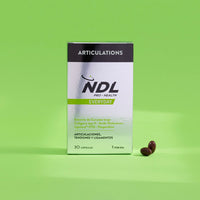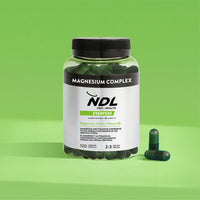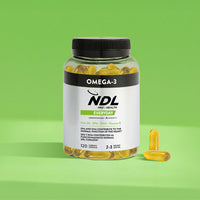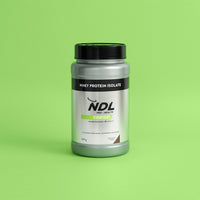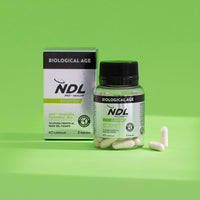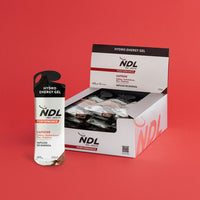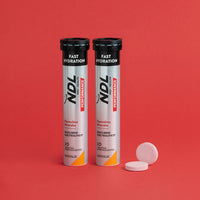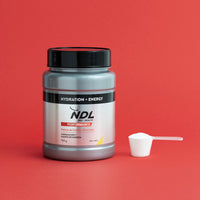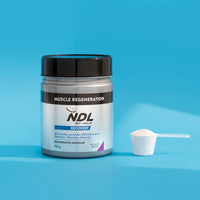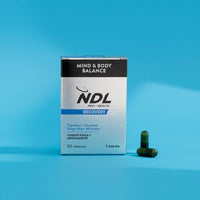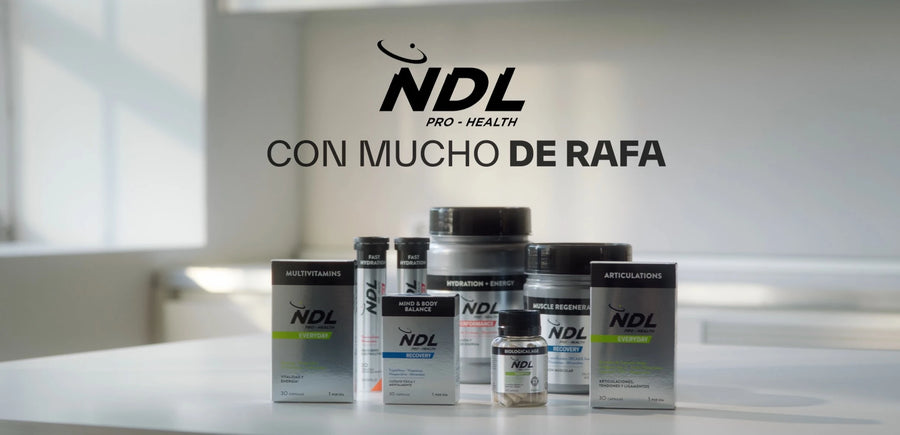Featured Products
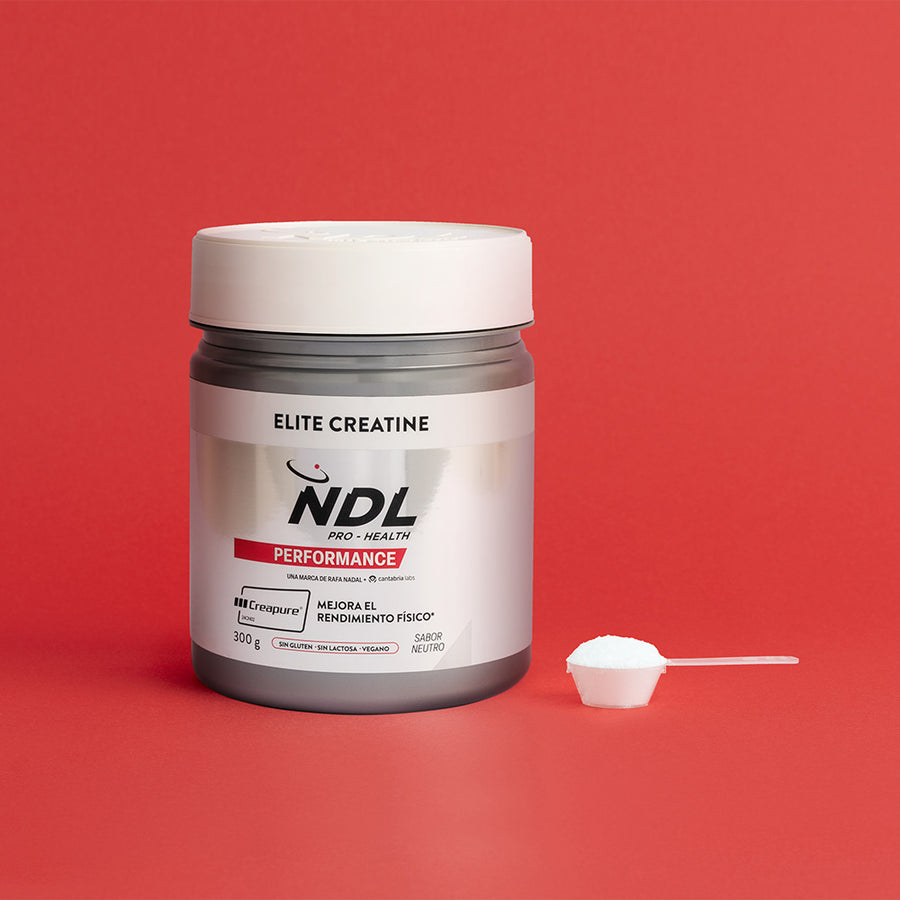
Creapure® Creatine Monohydrate
See productCreatine is one of the most studied and effective supplements for improving sports performance and increasing muscle mass, but to maximize its benefits, it is crucial that you know how to take creatine correctly, as its effectiveness depends on how it is consumed.
In this article, we will explore the different forms of creatine available on the market, how to do a loading phase to quickly saturate the muscles, the best time to take it, and how to mix it properly.
Whether you're new to the world of supplements or an experienced athlete, learning to optimize the use of creatine can make a difference in your physical and performance results. Keep reading to find out how to make the most of this powerful supplement!
Different Forms of Creatine
There are several forms of creatine on the market, each with different characteristics and potential benefits. The main forms of creatine are:
- Creatine Monohydrate: This is the most common and studied form. It has been shown to be very effective for improving athletic performance and increasing muscle mass in numerous scientific studies. This creatine dissolves easily in water, although some people may experience digestive discomfort if they consume high doses. It is the most affordable form and remains the preferred option for most users.
- Micronized Creatine: This is a version of creatine monohydrate, but processed to reduce particle size. This allows it to dissolve better in liquids and makes it easier to digest, which can benefit people who experience discomfort with traditional creatine monohydrate.
- Creatine HCl (Hydrochloride Creatine): This form is bonded to a hydrochloric acid group, which improves its solubility and absorption. Generally, smaller doses of creatine HCl are required compared to other forms, which can reduce the risk of stomach issues or water retention, common complaints with creatine monohydrate.
- Kre-Alkalyn Creatine: This is a form of creatine with a higher pH, making it more stable in the stomach. Theoretically, this allows for better absorption and prevents its breakdown into creatinine, a byproduct the body eliminates. However, there is not enough scientific evidence to support the idea that this creatine is significantly superior to monohydrate.
- Citrate Creatine: This variant combines creatine with citric acid, improving its solubility in water, which can facilitate absorption. Additionally, it may offer certain additional benefits related to cellular energy production, but higher doses of citrate creatine are required to achieve the same benefits as creatine monohydrate.
- Malate Creatine: This less common form combines creatine with malic acid. Malic acid is known for its role in the cellular energy cycle, so this combination is believed to offer additional energy and performance benefits, although there are not enough studies to strongly support this idea.
- Nitrate Creatine: This form combines creatine with a nitrate group. It may offer additional benefits in terms of vasodilation, meaning better blood flow during exercise. Like other less common forms, research is limited, and while promising, there is no conclusive evidence on its effectiveness.
- Creatine Ethyl Ester: Creatine ethyl ester has been chemically modified through a process called esterification to improve absorption. However, while marketed as more efficient than creatine monohydrate, studies have not shown a clear advantage over the more traditional form.
- Buffered Creatine: Buffered creatine has been treated with substances that help balance its pH. The aim is to improve absorption and reduce potential gastrointestinal side effects. An example of this type of creatine is Kre-Alkalyn, but again, the evidence of its superiority over creatine monohydrate is limited.
Overall, while there are various options, creatine monohydrate remains the most recommended and studied option, especially due to its excellent balance of effectiveness and cost. Other variants may be useful in specific cases or for people with particular needs, but most users will get the best results with monohydrate.

Creatine Loading Methods
The creatine loading method is a commonly used strategy to quickly saturate the muscles with creatine, maximizing its benefits faster than normal supplementation.
Creatine is stored in the muscles as phosphocreatine, and the loading phase helps rapidly increase these levels. Below are the loading methods and the purpose of the loading phase.
Loading phase: The loading phase consists of consuming relatively high doses of creatine over a short period, usually between 5 and 7 days. The goal is to saturate the muscles with creatine more quickly than with a lower maintenance dose.
Typical loading protocol: During the loading phase, it is usually recommended to consume between 20 and 25 grams of creatine per day, divided into 4 or 5 servings throughout the day (each serving would be approximately 5 grams). This high amount allows the muscles to reach maximum creatine levels in less than a week.
After the loading phase, the dose is reduced to a maintenance amount of around 3 to 5 grams per day to maintain creatine levels in the muscles.
Purpose of the loading phase: The loading phase is designed to quickly saturate the muscles with creatine. By having more creatine available, the muscles can regenerate ATP (adenosine triphosphate) faster during explosive efforts, improving performance in high-intensity activities such as weightlifting, sprinting, or interval training.
Another purpose is that by saturating the muscles with creatine, the benefits in terms of strength, power, and work capacity are experienced more quickly.
Alternative methods without a loading phase: Some users choose to avoid the loading phase and simply take a lower constant dose from the beginning, around 3 to 5 grams per day. This method also raises creatine levels in the muscles, but it takes longer to reach full saturation. With this approach, muscle saturation occurs gradually over approximately 3 to 4 weeks.
Advantages of avoiding the loading phase:
- Lower risk of stomach discomfort or side effects like bloating, which some people may experience with high doses of creatine.
- Product savings, as a lower amount is consumed from the beginning, which can make the supplement last longer.
Is the loading phase necessary?
Although the loading phase allows for faster results, it is not strictly necessary. If you prefer to avoid taking large amounts of creatine at once, you can opt for the constant dose method. The key is muscle saturation; the loading phase simply accelerates this process, but the benefits will be achieved either way if you continue to take creatine regularly.
In summary, the loading phase is an effective strategy to quickly increase creatine levels in the muscles, which can provide more immediate results in terms of performance and strength. However, a more gradual approach with constant doses is equally effective in the long term, although results may take a bit longer to appear.
Best Time to Take Creatine
The best time to take creatine has been debated, but there is no absolute consensus on a single "best" time that works for everyone. However, there are different approaches that can be considered depending on your goals and personal preferences:
- Before training (Pre-workout): Taking creatine before working out is popular because it is believed to help improve immediate performance. By having creatine in your system before starting exercise, the muscles can access quick energy (ATP) during high-intensity exercises like weightlifting or sprinting.
Advantages:
- Provides extra energy for short-duration, high-intensity exercises.
- May improve strength and power during the workout.
However, keep in mind that creatine is not an immediate-acting stimulant like caffeine, so its effects are not felt instantly but gradually manifest as the muscles become saturated with creatine over time.
- After training (Post-workout): Taking creatine after training is another option that many consider effective. The reason behind this is that muscles are more receptive to nutrients and supplements after a workout, as they are in a state of greater absorption. By taking creatine at this time, especially along with carbohydrates or protein, its absorption into muscle cells may be enhanced.
Advantages:
- Capitalizes on the increased nutrient absorption that occurs after exercise.
- May help in muscle recovery and faster phosphocreatine replenishment.
Some studies suggest that combining creatine with a meal rich in carbohydrates or proteins after exercise can enhance its absorption, which may help improve muscle protein synthesis and recovery.

- At any time of the day: Since the effect of creatine is related to long-term muscle saturation, taking it at any time of day can be equally effective. As long as you maintain a consistent creatine intake, the levels in the muscles will remain high, and the benefits will continue to manifest.
Advantages:
- No need to stick to a specific schedule, just ensure you take it daily.
- Convenient for those with variable workout schedules or who prefer more flexibility.
- Divided doses throughout the day: In the case of the loading phase, where higher doses (20-25 grams daily) are taken, it is recommended to split the creatine into multiple doses throughout the day (4-5 servings of 5 grams). This helps avoid stomach discomfort or bloating that some people may experience when taking a large amount of creatine at once.
In summary, there is no perfect and universal time to take creatine. If you have to choose a time, taking it after training might be slightly more beneficial since muscles are more receptive and absorption could be improved.
However, the most important thing is to take it consistently every day, as its effects depend more on muscle saturation than on the exact timing of ingestion. The best approach is the one that fits your routine and allows you to be consistent with supplementation.
How to Mix Creatine
Creatine can be mixed with a variety of liquids such as:
- Water: The most common and simple option. Creatine monohydrate will dissolve in water, but it may not dissolve completely. Shaking or stirring well is essential.
- Juice: Taking creatine with fruit juices like grape or orange juice is a popular option since the carbohydrates present in the juice can increase insulin release, which might improve creatine absorption into the muscles.
- Sports drinks: These drinks contain electrolytes and carbohydrates, which can also help with creatine absorption and improve hydration during exercise.
- Protein shakes: Mixing creatine with a protein shake is another popular option, especially after training. The proteins and carbohydrates in the shake can help improve creatine absorption.
Below are some instructions for mixing:
-Measure the proper dose of creatine: Use a measuring spoon or the scoop that comes with the supplement. Most creatine supplements recommend between 3 and 5 grams per serving.
-Add creatine to the liquid: Place the creatine in a glass or a bottle of water with the desired amount of liquid. To improve dissolution, you can use slightly warm liquid, as it will dissolve better than in cold liquid.
-Shake or stir well: If you're using a water bottle or shaker, shake vigorously for a few seconds to ensure the creatine mixes well. If you're using a glass, stir with a spoon until the creatine dissolves as much as possible.
-Drink immediately: Creatine, especially monohydrate, can settle at the bottom if left to sit for too long. It's best to drink it right after mixing.
Mixing creatine with coffee or tea?
Some people prefer to mix creatine with hot drinks like coffee or tea. This is possible and doesn't affect creatine's stability, but keep in mind that coffee contains caffeine, which has stimulating and diuretic effects. In excess, caffeine could counteract some of creatine's benefits by affecting hydration, so keep consumption moderate.
Recommendation on liquid temperature
Although creatine dissolves better in warm liquids, it is not necessary to use hot water. If you prefer to take it cold, just shake or stir longer to ensure better mixing.
Stay well hydrated
It is important to drink enough water throughout the day when taking creatine since creatine can draw water into muscle cells, which could dehydrate the rest of the body if you don't consume enough fluids.
In conclusion, creatine is a highly effective supplement for improving physical performance and increasing muscle mass, but its optimal use depends on how it's taken.
Knowing the different forms of creatine available, doing a loading phase or maintaining a constant dose, and choosing the best time to take it are key factors in maximizing its benefits. Additionally, it's important to know how to mix it properly and maintain adequate hydration.
By following these recommendations, you can ensure you're getting the most out of creatine and reach your training goals faster.
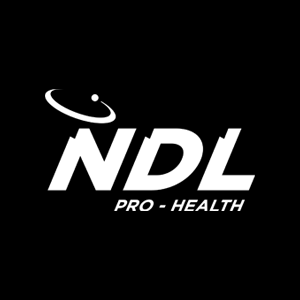
From the NDL Pro-Health team we will provide you with tips to maintain a healthy lifestyle. Sharing knowledge and product recommendations to offer optimal solutions for your daily routine, for your workouts and subsequent recovery, all with the goal of helping you achieve physical and mental wellness.

